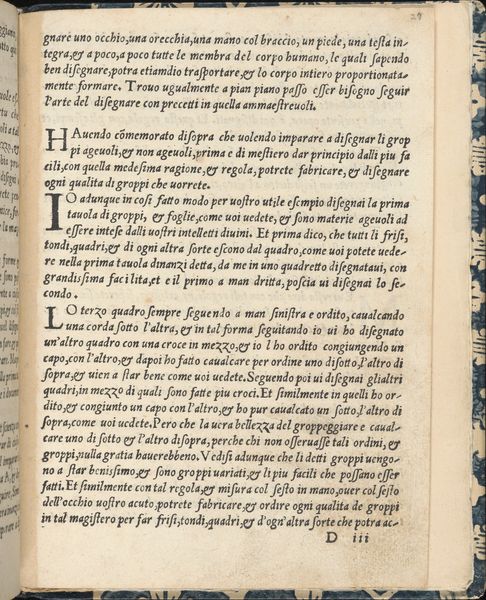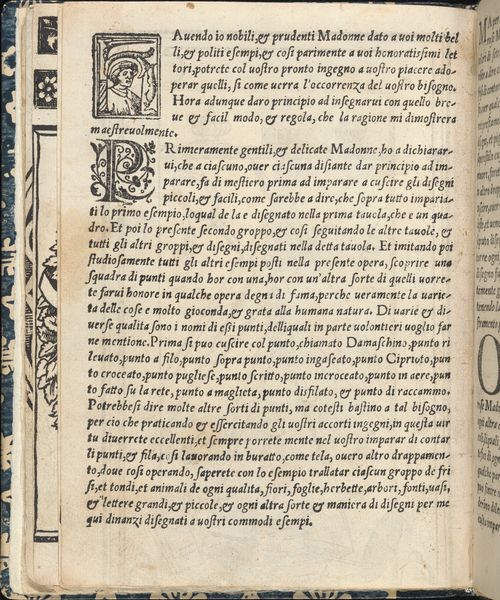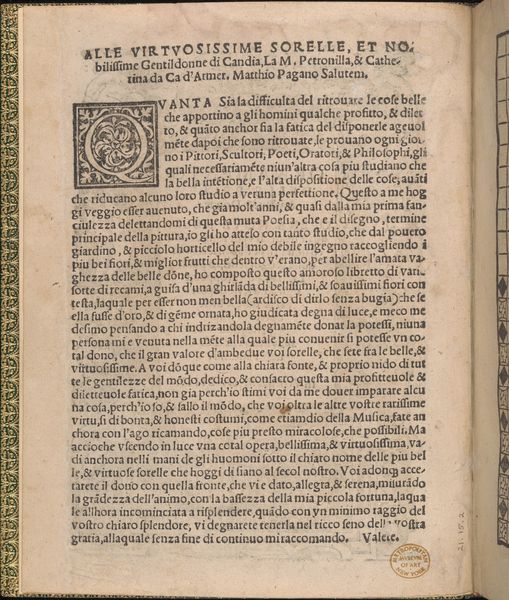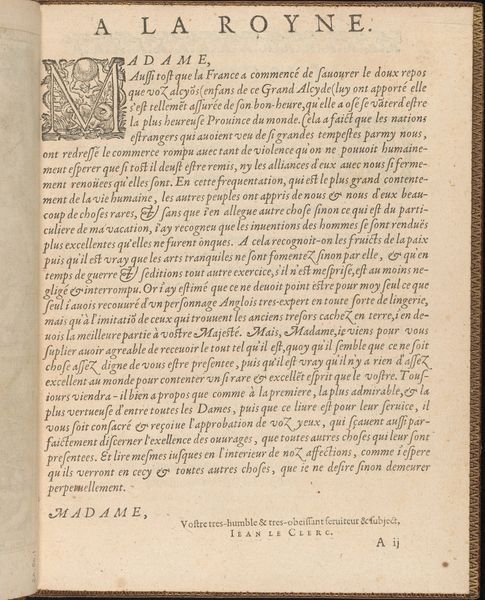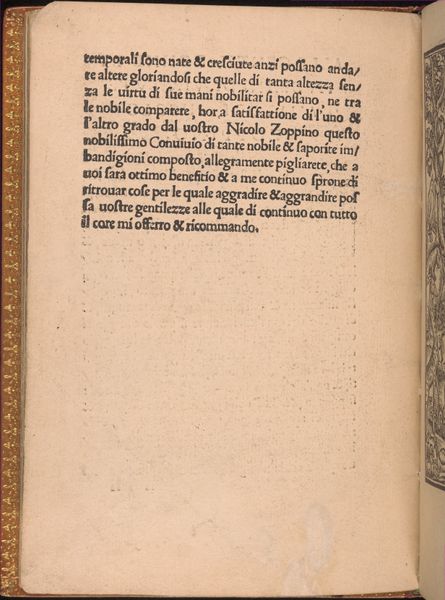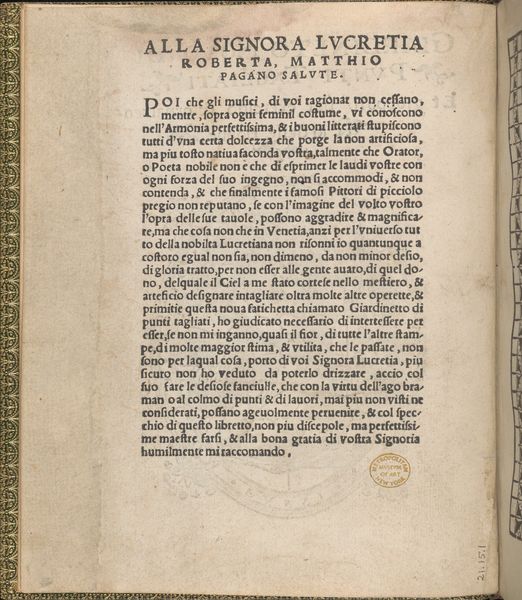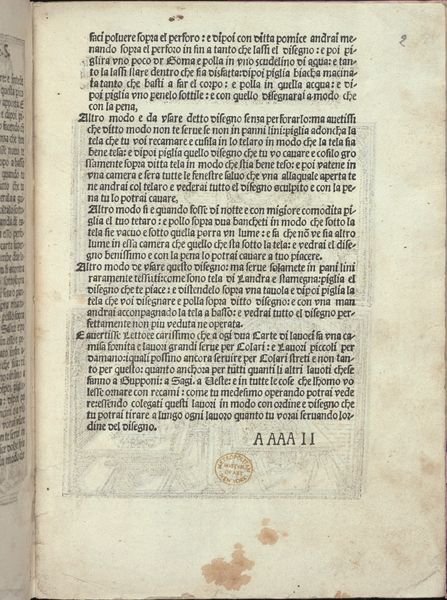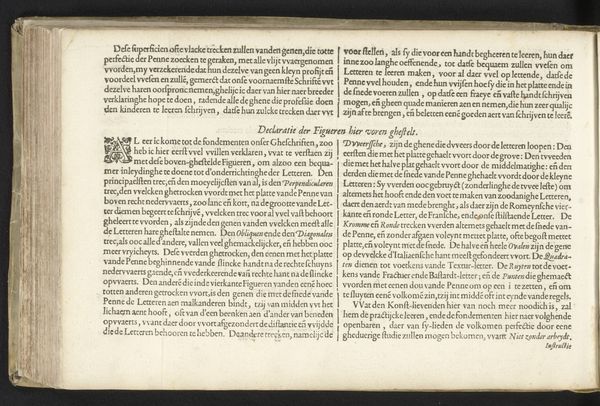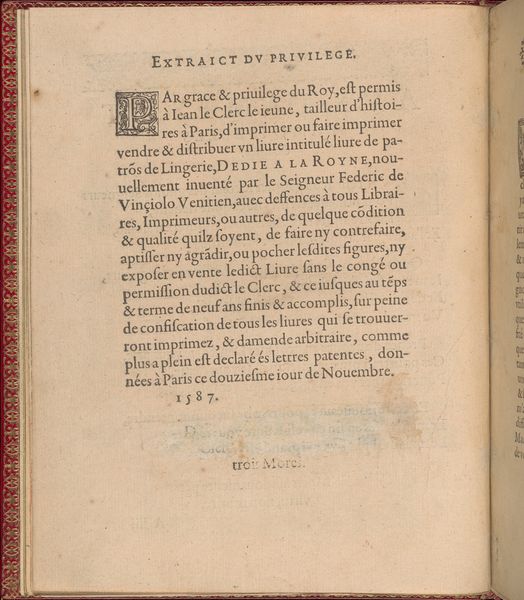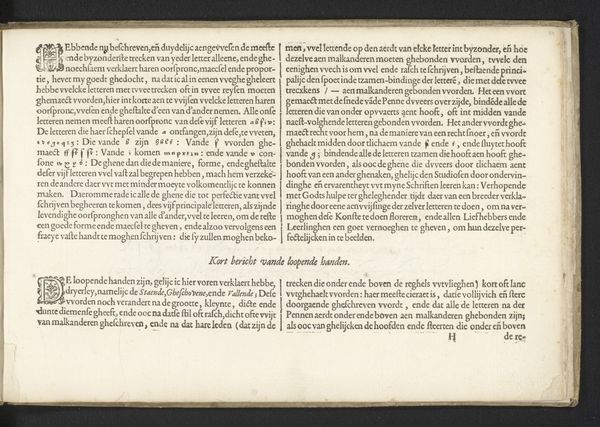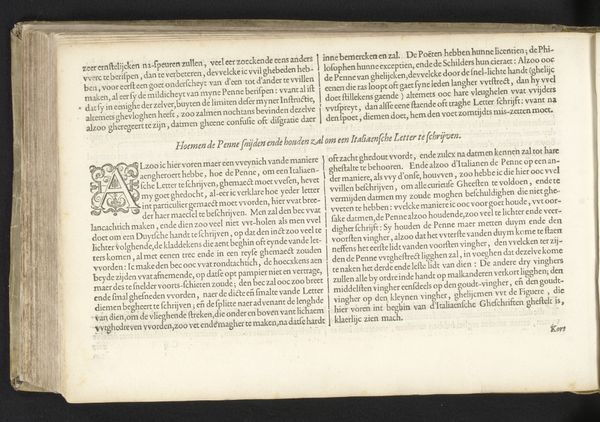
Essempio di recammi, title page (verso) 1530
0:00
0:00
drawing, print, textile, paper, typography
#
drawing
# print
#
book
#
textile
#
paper
#
11_renaissance
#
typography
#
italian-renaissance
Dimensions: Overall: 7 13/16 x 6 3/16 x 3/8 in. (19.8 x 15.7 x 1 cm)
Copyright: Public Domain
Curator: We're looking at "Essempio di recammi, title page (verso)" by Giovanni Antonio Tagliente, dating back to 1530. It's currently housed at the Metropolitan Museum of Art. Editor: My initial impression is that it’s intensely ordered. The tightly packed text, like a woven fabric, has a powerful graphic quality of light and dark patterns across the entire page. Curator: Indeed, this piece is a printed page from a book, specifically a manual intended to teach needlework, embroidery, and design to women. Notice the beautiful typography. It combines printmaking with the practical arts. Editor: The content serves almost as an index for techniques. From friezes and Moorish patterns to animals and landscapes, this layout demonstrates the period's pursuit of ornament, almost bordering on excess. Curator: The book emerges in a period of flourishing Italian Renaissance art where pattern books were crucial tools, and women played an essential role both as consumers and practitioners. They represent both wealth and refinement. It illustrates social stratification. Editor: Exactly, while beautiful, these tightly woven patterns become instruments to enforce social status, demonstrating a gendered approach to learning and accomplishment. The initial decorative letter on the upper-left shows its connection to a tradition of manuscript decoration. Curator: And in that way the drawing style and illustrative content served very clear instructional aims; however, its lasting influence stretches far beyond needlework into art. Look at how these books promoted not just technique, but design vocabulary itself, influencing textile art across Italy. Editor: I find it a poignant demonstration of the intersection between commerce, domesticity, and artistry. While this is an aesthetically pleasing arrangement of characters on the page, it’s hard to ignore its position within socio-historical settings of female training during the Renaissance. Curator: Absolutely, reflecting on it this print’s impact extends past aesthetics into considerations around accessibility and influence. Editor: And I think considering it alongside the historical narrative of Renaissance design allows us to approach questions of accessibility, utility and purpose with more intentionality.
Comments
No comments
Be the first to comment and join the conversation on the ultimate creative platform.
